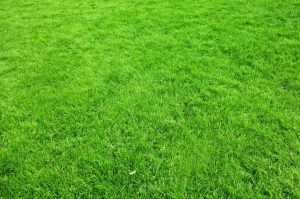Couch grass is a popular choice for many Australian gardens due to its hardiness and proclivity for spreading, resulting in a lush, brilliant green environment. However, as we all know, every rose has a thorn. Couch grass’s runners sometimes spread too aggressively, making managing our gardens challenging.
That’s why we’re here to help you grasp the intricacies of couch grass runners – their benefits, drawbacks, and how we can manage them together to keep your garden looking precisely how you want it.
What are couch grass runners?
Couch grass runners, or stolons or rhizomes, are specialist stems that grow horizontally, either above or below ground (stolons). They play an important part in couch grass reproduction and expansion, letting it spread swiftly and easily cover enormous regions.
As these runners expand, they produce new shoots and roots at their nodes, allowing new grass plants to establish and the lawn to thicken overall. Depending on your unique aims for outdoor settings, this procedure can be both a blessing and a curse for gardeners.
How to identify couch grass runners
The ability to identify couch grass runners is critical for proper treatment. They are distinguished by long, slender stems that run horizontally above or below ground.
The runners are normally light green to yellow-green in tint, with a slightly wiry texture. Meanwhile, the runners, anxious to produce new grass plants, spread from the main plant, sprouting new shoots and roots from their nodes.
As a result, if you find something similar to the image below, you most certainly have runners in your couch grass.

Are grass runners good?
Couch grass runners can be your best friend or your worst nightmare, depending on your garden’s needs.
Benefits:
- Rapid lawn coverage: Do you need to fill up those pesky bare patches in your lawn? Couch grass runners come to the rescue, spreading swiftly to form a dense, luxuriant lawn.
- Control of soil erosion: The runners produce a thick network of roots and shoots that can prevent soil erosion, especially on slopes.
- Drought tolerance: As Australians, we understand how important our plants are to survive in dry weather. Couch grass may establish extensive root systems thanks to the runners, making it drought-resistant.
Limitations:
- Invasive expansion: Couch grass runners might infiltrate your lovely garden beds or even your neighbour’s yard if left to their own devices. That is not something we want!
- Maintenance: To keep these runners under control, you’ll need to roll up your sleeves and do regular mowing, edging, and other tasks.
- Competition: Because the runners are so good at what they do, they might outcompete and choke out other plants in your garden that you’ve thoughtfully planted.
How to plant couch grass runners to spread
If you’re on team couch grass runners and want to grow your lawn, here’s how:
- Locate a healthy patch of couch grass with obvious runners.
- Lift the runners gently to avoid damaging the roots or shoots.
- Clear weeds and loosen the soil where you want the grass to grow.
- Place the runners in the soil, ensuring the nodes (where new shoots and roots form) are in contact with the soil.
- Water the newly planted runners thoroughly and keep the area moist until the grass has established itself.
How long does it take couch grass to spread?
When it comes to spreading, couch grass is no slacker. In warm conditions, seedlings normally appear 7 to 12 days after being sown from seed.
We recommend planting sprigs or runners in late spring or early summer and laying turf in late winter or early spring for the best results. With proper maintenance, your new couch grass lawn will swiftly develop and expand, providing beautiful ground coverage in no time.
Controlling couch grass runners
For those of us who want to control couch grass runners, don’t worry – there are options! In short, there are three main strategies to control grass runners:
- Cultural control
- Physical control
- Chemical control
Understanding these strategies allows you to select the best approach for maintaining your lawn and preventing undesirable growth.
1. Cultural control methods
Cultural management strategies entail changing our lawn-care routines to prevent couch grass runners from spreading. These non-invasive approaches can efficiently manage runner growth. In Australia, some popular cultural control measures include:
- Regular mowing: Keep your lawn mowed to the couch grass suggested height (about 25mm to 40mm). This helps to keep the turf compact, making it more difficult for runners to spread.
- Edging: Create a barrier around your garden beds and other areas where grass should not grow. Physical obstacles such as bricks or metal edging can be used, or a well-defined edge can be maintained through frequent pruning.
- Watering: Water deeply and infrequently to stimulate deep root growth rather than shallow root systems that favour runner spread.
2. Physical control methods
Rolling up your sleeves and manually removing or controlling the growth of couch grass runners are physical control approaches. While it can be difficult, these procedures provide a direct and quick approach to dealing with unwanted growth.
To help with the labour, we recommend arming yourself with the following physical control tools:
- Garden shears: Trim runners that stretch beyond the ideal grass area or encroach on garden beds with garden shears.
- Lawn edger: A lawn edger, line trimmer or a sharp spade can be used to cut through runners developing along the edges of your grass, preventing them from spreading into undesirable areas.
- Hand weeding: Hand weeding might efficiently eliminate individual couch grass runners in limited areas.
3. Chemical Control Methods
Herbicides are used in chemical management strategies to manage the growth of couch grass runners.
Although these strategies can be helpful, you should consider their possible influence on the environment and other plants in your garden. Among the most prominent chemical control products available in Australia are:
- Selective herbicides: Products such as Monument Liquid and Tribute are meant to target specific grasses, such as couch grass, while leaving other plants alone.
- Non-selective herbicides: While glyphosate can kill couch grass runners, it will also harm other plants with which it comes into contact. To avoid harming your prized plants, use these products with caution and accuracy.
To control couch grass runners with chemicals, observe the manufacturer’s application and safety guidelines. Additionally, avoid contact with other plants by applying the pesticide directly to the runners.
Tips for preventing couch grass runners
As the adage goes, prevention is preferable to cure. Here are some suggestions for preventing runner growth in your garden:
- Select the proper grass species: Consider choosing a grass species with less aggressive growth habits if you’re starting a new lawn or upgrading an old one.
- Keep an eye on the health of your lawn: A healthy grass is less prone to develop an abundance of runners. Make sure your lawn has enough water, nutrients, and sunlight.
- Regular maintenance: To inhibit runner development and preserve a well-kept landscape, keep up with mowing, edging, and other grass maintenance duties.
Understanding how couch grass runners work and how to regulate them will help you create your ideal outdoor space, whether you want to encourage their spread or keep them in check.
In conclusion, couch grass runners are a typical concern for many Australian gardeners due to their sturdiness and ability to spread quickly. If you don’t have couch grass, be sure to check out out guide to handling buffalo grass runners.
Happy gardening!






